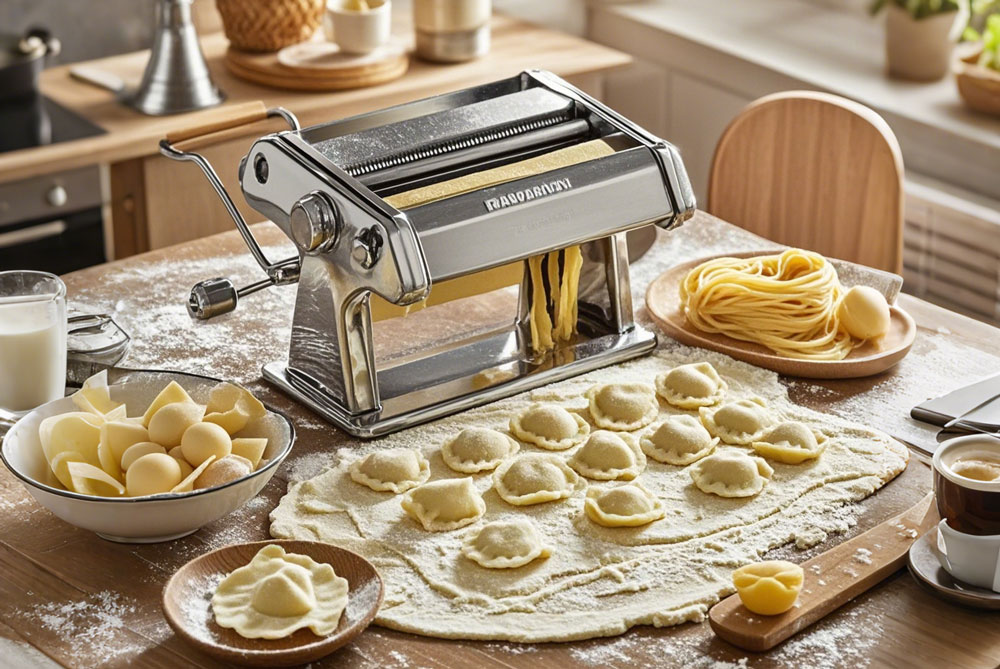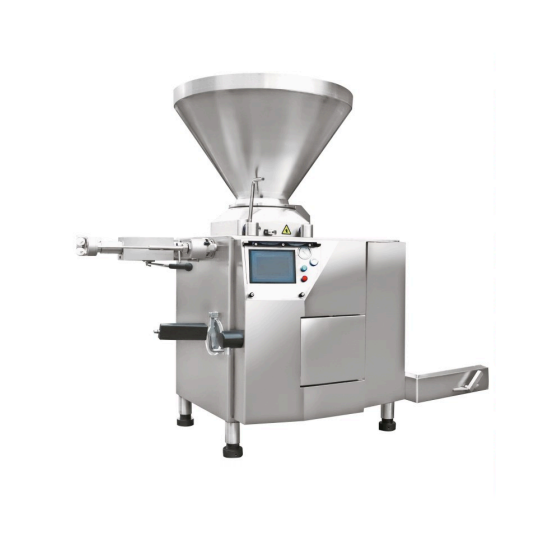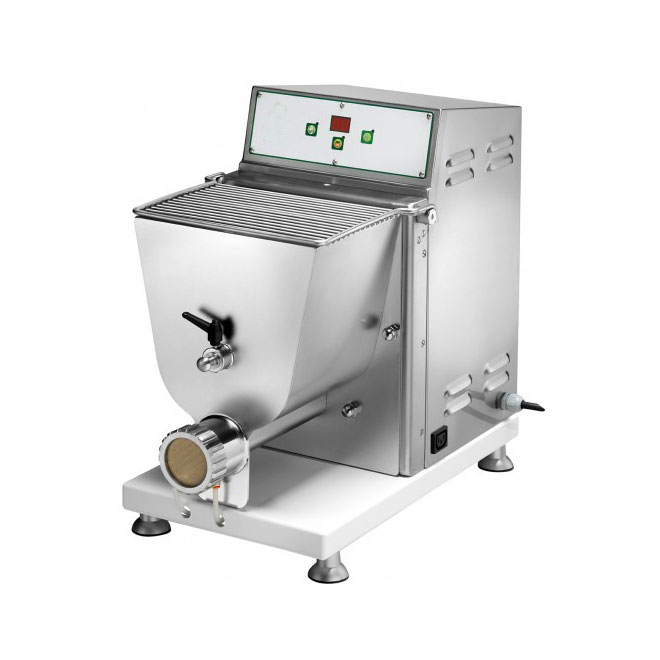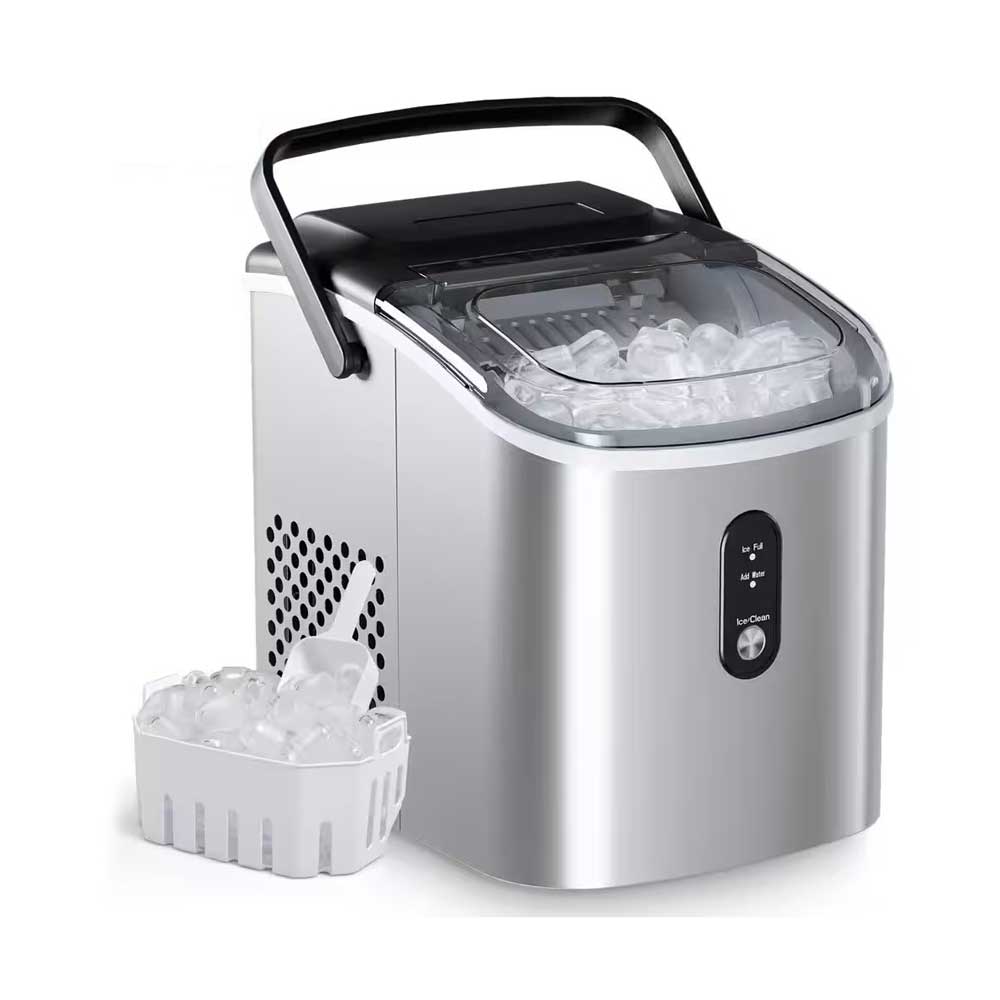How To Make Ravioli Dough With Pasta Machine

Introduction: Why Homemade Ravioli Dough is Worth the Effort
The Art of Fresh Ravioli and Why It’s Better Than Store-Bought
Homemade ravioli is an experience that transcends the ordinary. When crafted with care, fresh ravioli offers a level of authenticity, flavor, and texture that pre-packaged versions simply cannot match. The soft, tender dough and perfectly sealed pockets of filling make each bite a celebration of craftsmanship. Unlike store-bought ravioli, which may lack flavor or have a rubbery texture, homemade ravioli provides unparalleled richness that enhances any meal.
The Importance of Using a Pasta Machine for Perfect Dough
A pasta machine is not just a convenience, it’s a game-changer for ravioli dough. By rolling out dough evenly and to the desired thinness, a pasta machine ensures consistent results every time. This precision is essential for ravioli, as the dough needs to be thin but sturdy enough to hold the filling without breaking. Manual rolling can result in uneven thickness, leading to either overcooked or undercooked sections. A pasta machine, therefore, guarantees perfection with minimal effort.
How Homemade Ravioli Enhances the Flavor and Texture of Your Pasta
Homemade ravioli gives you complete control over the flavors, texture, and fillings. Whether you opt for a rich meat filling or a vibrant vegetable stuffing, the freshness of the dough complements the fillings perfectly. This control allows you to experiment with textures—soft, delicate dough encasing flavorful fillings—providing an immersive dining experience that store-bought ravioli can’t replicate. Furthermore, the lack of preservatives means the flavors are clean, pure, and natural.
What You Need to Make Ravioli Dough
Essential Ingredients for Ravioli Dough
The key to perfect ravioli dough lies in using simple yet high-quality ingredients. At its core, ravioli dough requires just flour, eggs, water, and a pinch of salt. These ingredients, when combined correctly, create a dough that is elastic and pliable, the perfect base for your ravioli.
Choosing the Right Flour for Ravioli Dough
The type of flour you use is critical in achieving the right texture. For the best results, opt for "00" flour, which is finely ground and produces a silky smooth dough. All-purpose flour can be used as an alternative, but "00" flour provides a softer, more delicate texture that is ideal for ravioli. Some people prefer to mix semolina flour with "00" flour to add a slight bite to the dough, though this is optional depending on your desired outcome.
The Role of Eggs in Creating the Perfect Dough
Eggs are the secret ingredient in ravioli dough, providing both structure and richness. The yolks contribute to the dough’s color and elasticity, making it soft yet easy to work with. The whites add moisture, helping bind the flour together. A standard recipe uses two eggs for every 100 grams of flour, creating a balanced dough that holds together well while remaining flexible.
Tools and Equipment: The Pasta Machine, Rolling Pins, and More
To achieve the best ravioli dough, having the right tools is essential. A pasta machine allows you to roll the dough evenly and thinly. While rolling pins can be used in place of a machine, they often make it harder to achieve the consistency needed for ravioli. Additionally, ravioli molds or cutters are helpful for ensuring each ravioli is the same size and shape. Other essentials include a sharp knife for cutting dough, a brush for cleaning, and a small bowl for the egg wash.
Understanding the Dough-Making Process
The Basics of Pasta Dough: Key Ingredients and Their Roles
The beauty of pasta dough lies in its simplicity. Flour provides structure, while eggs create elasticity and moisture. Salt adds flavor, and oil (optional) helps smooth out the dough. Together, they create a dough that is flexible, elastic, and easy to handle, making it the perfect foundation for ravioli.
Why Consistency and Texture Matter for Ravioli Dough
Ravioli dough must be consistent in texture, neither too thick nor too thin. If the dough is too thick, the ravioli will be too heavy, and the filling won’t cook evenly. If the dough is too thin, it risks tearing during filling or boiling. The ideal ravioli dough is slightly elastic, smooth, and silky—able to stretch easily but sturdy enough to hold its shape during cooking.
The Science Behind Kneading and Resting Dough
Kneading is essential for developing the gluten in the dough, which gives it structure and elasticity. The dough should be kneaded until it becomes smooth and firm but not overly tough. Resting the dough is just as important—letting it sit for at least 30 minutes allows the gluten to relax, making the dough easier to roll out without springing back.
Step 1: Preparing the Ingredients for Ravioli Dough
Measuring the Ingredients Accurately
Precision is key when making pasta dough. Measure your ingredients carefully, especially the flour and eggs, to ensure the proper balance of moisture and structure. A kitchen scale can help you get an exact measurement, ensuring your dough turns out just right.
Preparing the Flour and Eggs for Easy Mixing
Before mixing, create a well in the center of your flour to prevent eggs from spilling out. Crack the eggs directly into the well and add the salt. This creates a bowl for the eggs to stay contained while you slowly incorporate the flour from the edges into the mixture.
The Role of Salt and Olive Oil in Enhancing the Dough’s Flavor
Salt enhances the flavor of the dough, making it more than just a vessel for the filling. A tablespoon of olive oil adds richness to the dough, though it is optional. The oil also makes the dough easier to work with, as it prevents it from becoming too dry.
Step 2: Mixing the Ingredients Together
How to Form a Well for Mixing the Flour and Eggs
To form the dough, pour the flour onto a clean, flat surface, creating a mound with a well in the center. Crack your eggs into the well, and use a fork to gently whisk the eggs while gradually incorporating the flour around the edges. This helps prevent the eggs from spilling out.
Combining the Ingredients for a Smooth, Consistent Dough
Once the flour is incorporated with the eggs, begin mixing with your hands. Work the dough until it begins to form a rough ball. If it’s too sticky, add more flour; if it’s too dry, add a small amount of water until the dough becomes soft but not wet.
Tips for Avoiding Dry or Sticky Dough
To avoid dry dough, ensure that the eggs and flour are well-mixed, and the dough is not overworked. If the dough becomes too sticky, sprinkle lightly with flour as you knead. But don’t overdo it—adding too much flour can make the dough dense and difficult to work with.
Step 3: Kneading the Dough to Perfection
How Long to Knead the Dough for Ideal Texture
Kneading the dough for about 10 minutes creates a smooth and elastic texture. You’ll know the dough is ready when it’s firm but pliable, with no cracks when you press it.
The Importance of Resting the Dough After Kneading
Resting allows the gluten strands to relax, which is crucial for easy rolling. Wrap the dough in plastic wrap or a damp cloth and let it rest at room temperature for at least 30 minutes.
Understanding the Difference Between Over-Kneaded and Under-Kneaded Dough
Over-kneading makes the dough tough and hard to roll out, while under-kneaded dough will lack the elasticity necessary for ravioli. The dough should spring back when you press it with your finger, indicating that the gluten has developed properly.
Step 4: Resting the Dough for Optimal Results
Why Resting is Crucial for Relaxing the Gluten
Resting gives the dough a chance to relax and reduces the tension in the gluten. This makes the dough easier to roll out thinly without it springing back or becoming too elastic.
How Long Should You Let the Dough Rest?
A minimum of 30 minutes is recommended, but if you have the time, an hour or more will yield even better results. Longer resting time improves the dough’s texture, making it easier to roll and shape.
Tips for Wrapping and Storing the Dough During the Resting Period
Wrap the dough in plastic wrap or a damp cloth to prevent it from drying out. If you’re not using it immediately, store it in the refrigerator for up to 24 hours.
Must-Read Blogs For Chain Restaurants Owner











 Pasta Machine
Pasta Machine Multifunction Pasta Machine
Multifunction Pasta Machine Portable Flake Ice Machine
Portable Flake Ice Machine
Ready to Get Started?